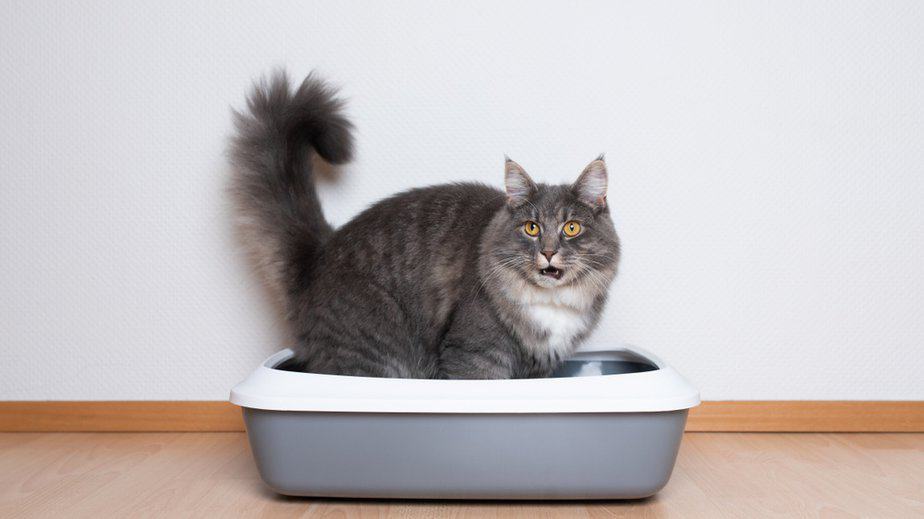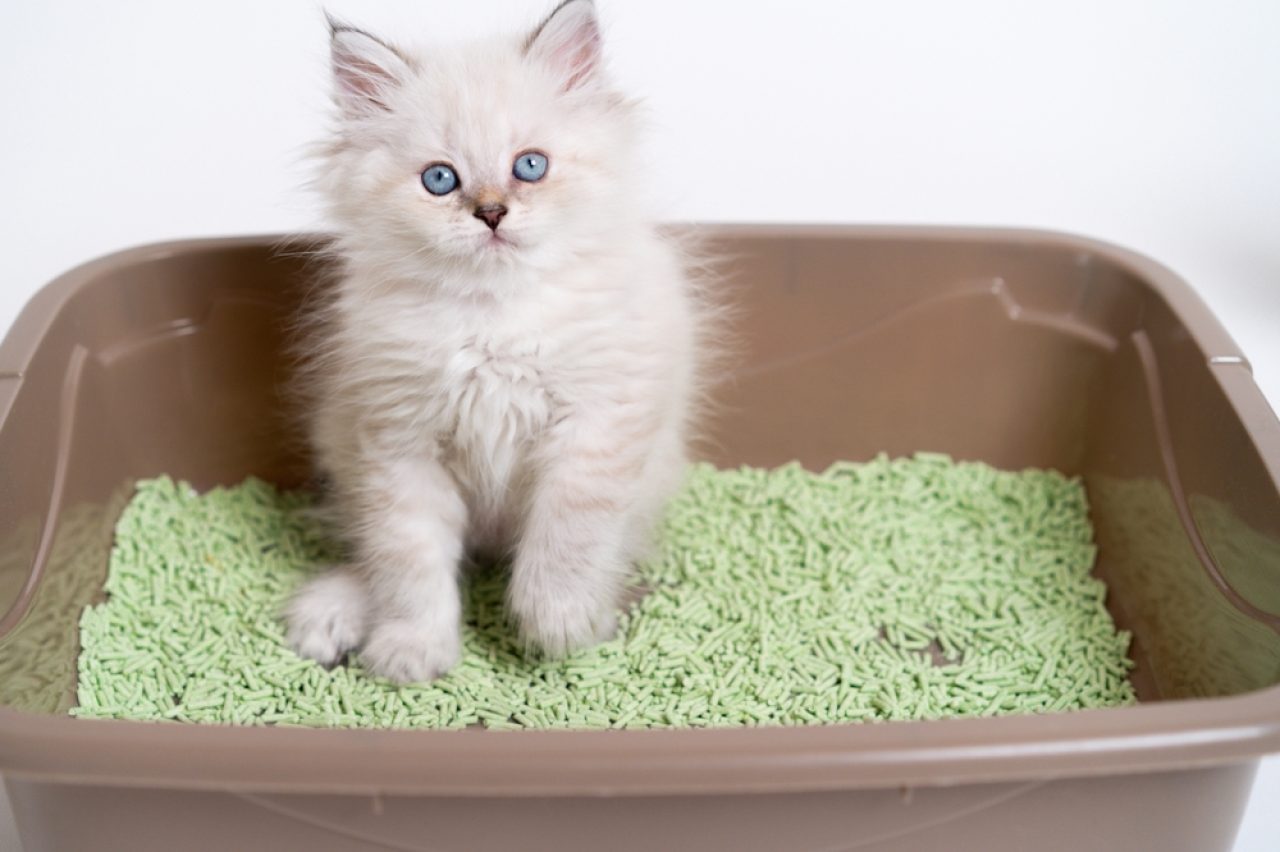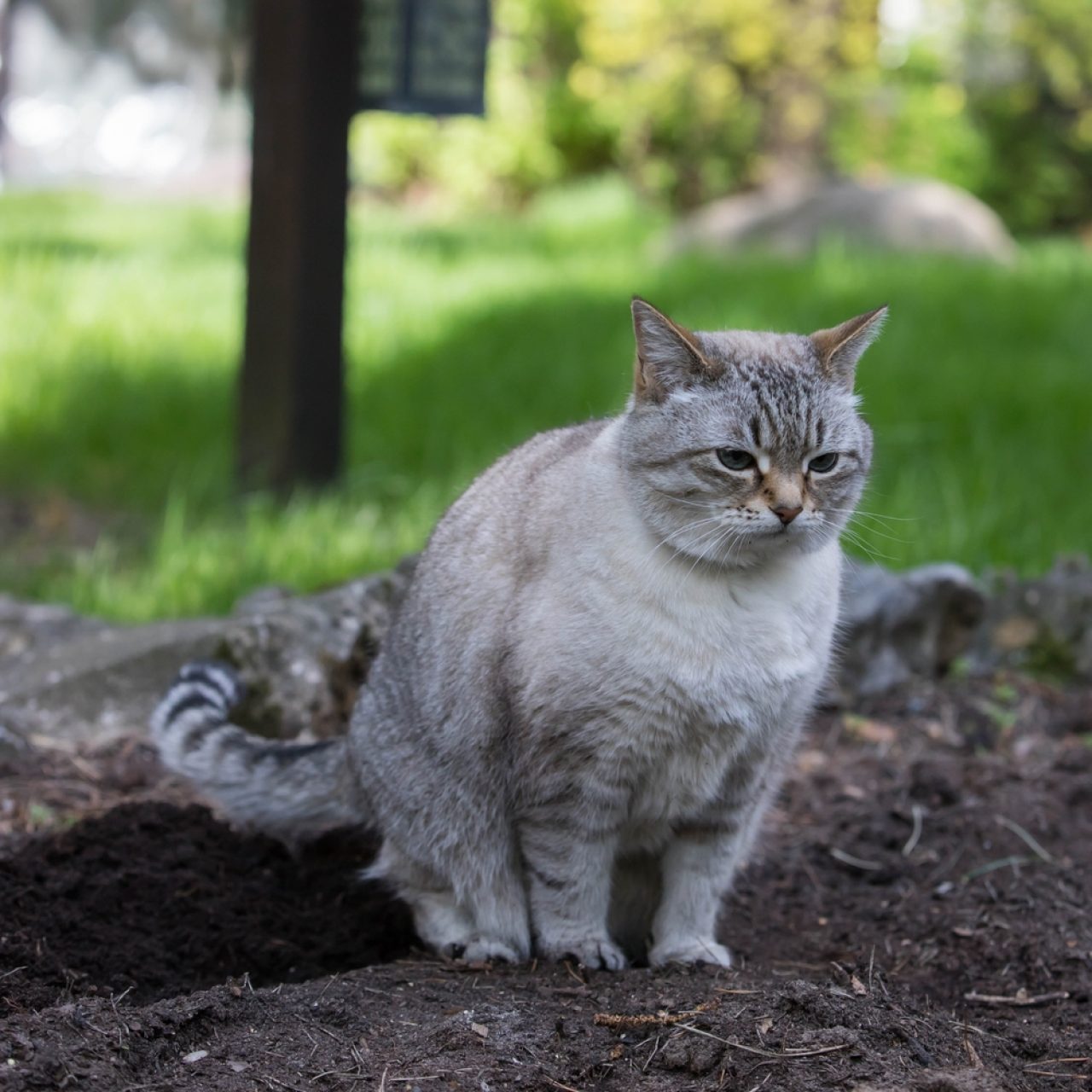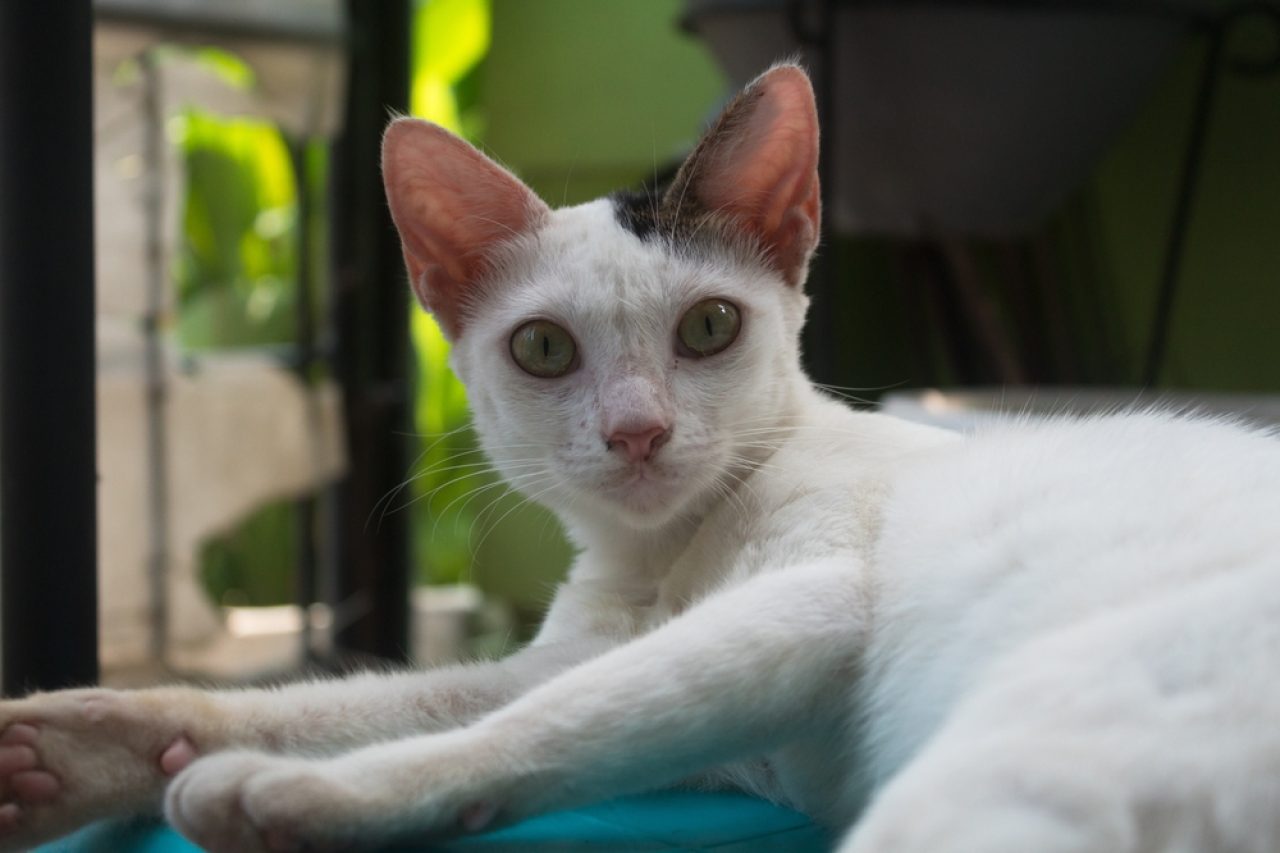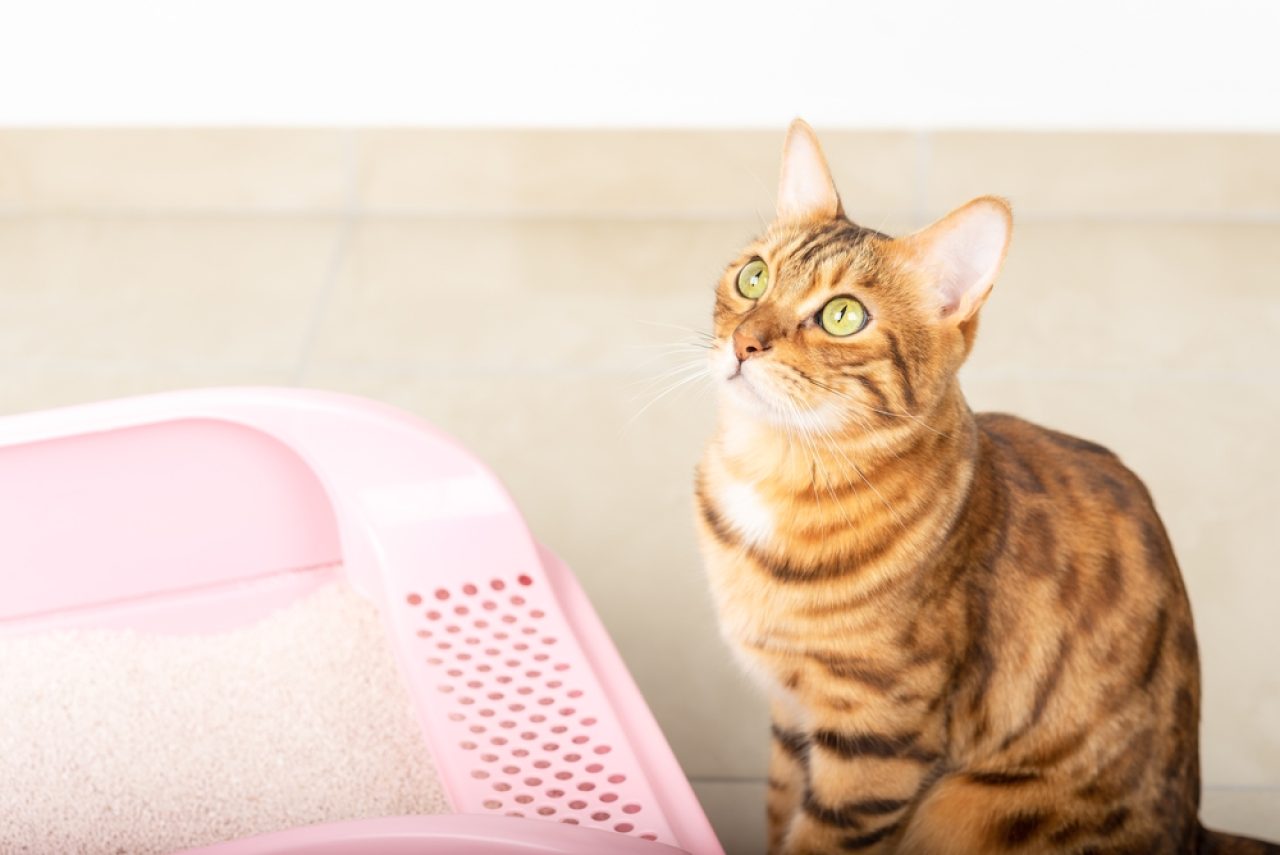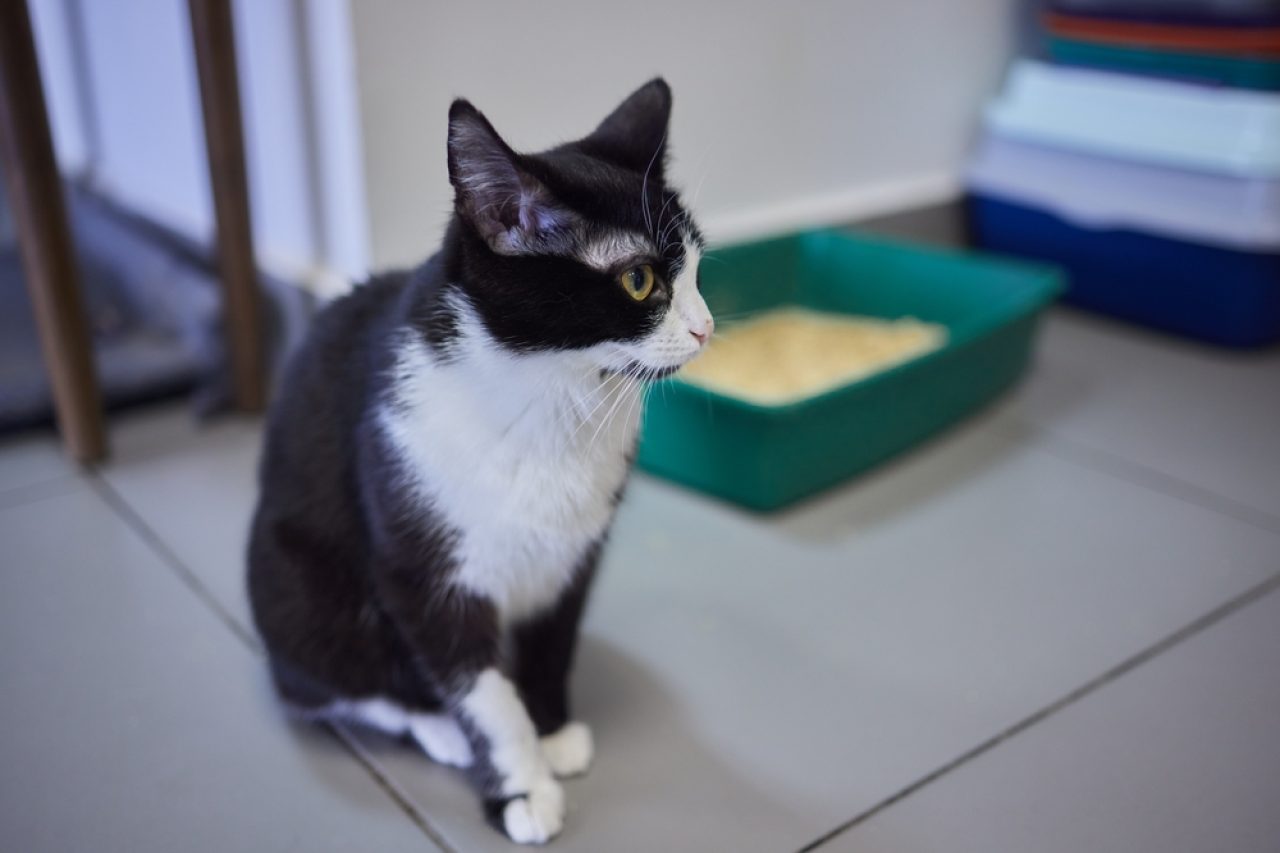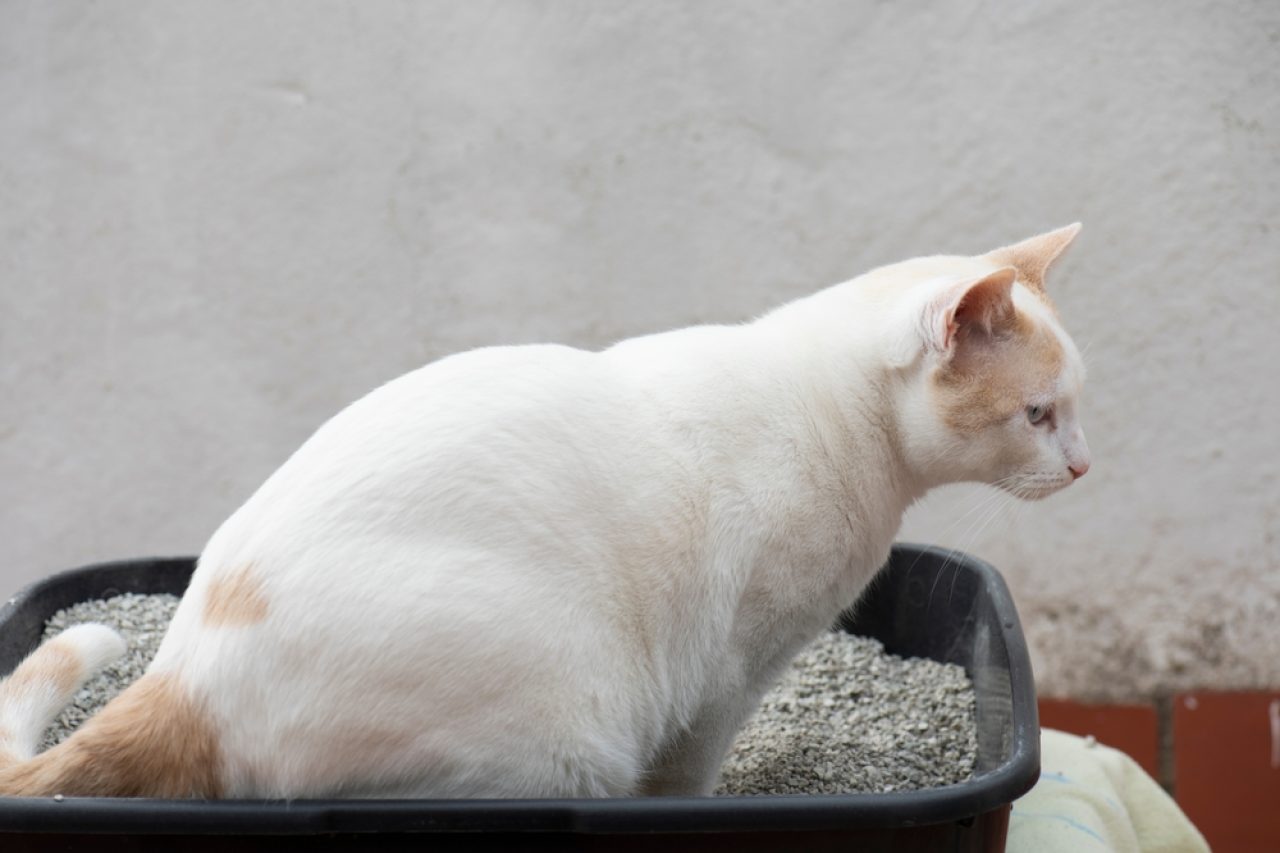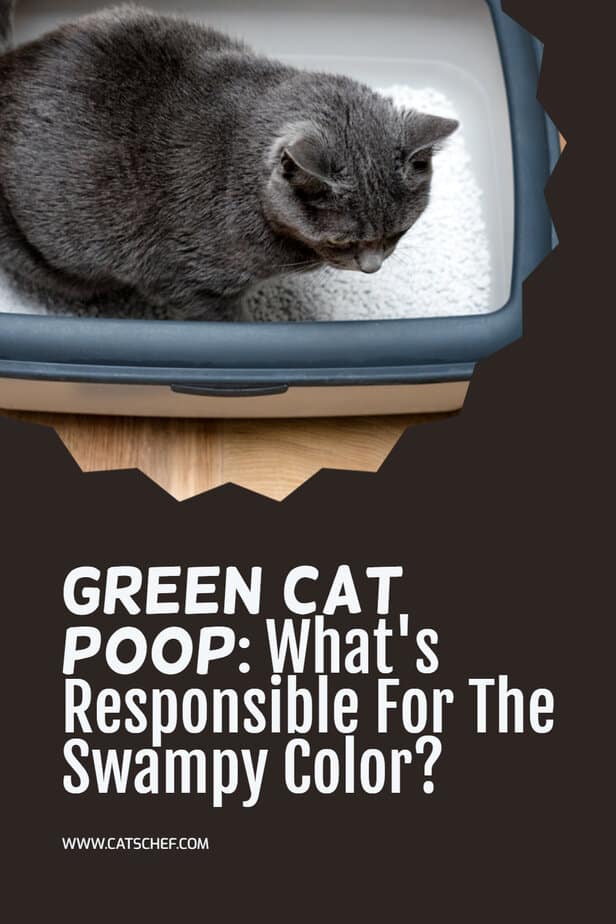📖 Table of Content:
“Why is there green cat poop in my pet’s litter box?” Cats are strange, strange creatures that make us question everything they do (and everything we do). From farting under your covers to pooping outside the litterbox, they seem to think there’s nothing wrong with poopy conduct.
But, there’s always a but hiding somewhere where you wouldn’t even dare look. On one hand, cats are known to do things out of spite because they’re angry or annoyed with you. On the other, cats can’t do anything about the color of the poop because that’s not something they can control.
Therefore, green poop might not be your cat’s revenge because you refused to share your chicken nuggets with her. More often than not, green poop is your cat’s way of communicating that there’s something wrong with her health – whether that be her digestive system or her nutrition.
While you might not have the habit of checking your cat’s litterbox to make sure her poops are “normal” and “healthy,” that’s something a responsible pet parent should do. Observing and analyzing your cat’s bathroom escapades can help you recognize when something’s off and react appropriately (and promptly).
Worry not, we’re bringing you everything you need to know about your cat’s bowel movements to get you started. What does “normal” cat poop look like? What causes green cat poop? And, what do you need to do when you notice your cat’s poop turning an odd color or texture? Keep on reading!
What’s the scoop on cat poop?
Nobody wants the poop talk, right? But, sometimes the color and the texture of your cat’s poop can communicate whether she’s healthy, feeding properly, and doing enough exercise. Monitoring your cat’s droppings might not be your purrfect Sunday activity, but it’s necessary nonetheless.
Starting from the beginning, when we’re talking about healthy poop colors, we’re normally talking about different shades of brown. Brown poop that’s firm, not too hard, and not too soft (pliable like play dough) means your fluffer doesn’t need to change pretty much anything about her current lifestyle.
However, dark brown and black poops aren’t as safe. Dark colors symbolize that there’s some sort of bleeding going on around the upper GI tract. Hence, that means that your cat might be bleeding from her mouth, stomach, or small intestines.
Black poop generally means that the blood has gone through the digestive system. Contact your vet the moment that you notice such changes when we’re talking about the darkness of your cat’s poop. And, do the same on the off chance that you notice red streaks coming from your cat’s poop, too.
Red streaks also signalize that there’s probably bleeding around the large intestine or the lower area of the GI tract. A one-time thing shouldn’t be a cause for concern, but when the streaks keep appearing don’t wait too long before you contact your vet.
Last but not least, colors such as yellow, orange, and green are a result of liver or gallbladder problems. Now, the healthy brown color of the poop comes from something known as bile.
The liver’s responsible for producing the bile, and the gallbladder’s responsible for storing the bile. When these two organs don’t do what they’re supposed to do, the poop can turn out a different color.
What makes your cat’s poop green?
Green cat poop can be a result of so many things! From the above-mentioned bile to circumstances such as proper nutrition, exercise, and stress levels, we can’t even fathom how many things can affect the quality of our fluffer’s poops.
Oh and, not to mention the part that health problems, digestive problems, and medication play! Whatever’s causing your fluffy friend to produce green poop, take a peek at what we’ve gathered before you contact your veterinarian and bother him with a million questions.
1. Diet
We’re putting diet as the number one cause of green cat poops, and here’s why. When you notice your cat’s been leaving green droppings all over the place but hasn’t been showing other symptoms, you can be sure she’s eaten something that’s causing her poop to turn that color.
When you eat Skittles, you poop rainbows, right? That’s the same thing that happens with your cat – when she eats a lot of greens and veggies that contain a compound known as chlorophyll, she’s bound to produce green poops.
While most cats aren’t happy to eat green and veggies, some are curious enough to scour through your herb garden and munch on everything they can reach. To be on the safe side of things, make sure you keep those things out of your cat’s reach because some of them could cause health problems.
And, don’t forget to contact your veterinarian even when you suspect she might have eaten something green. Cats can have sensitive digestive systems, too. Green poops might not be the only side effect of munching on greens and veggies, and you’re better off safe than sorry.
2. Bile
Oh, the dreaded bile! We’ve touched upon the fact that this little thing known as bile makes sure your cat has a healthy, brown, and buttery poop (we’re so sorry for using the term “buttery”).
When your cat doesn’t get enough bile for one reason or another, she might experience digestive problems. First off, bile’s produced by the liver. The liver sends off the bile toward the gallbladder.
Then, the gallbladder stores the bile and waits for your cat to eat something to release sufficient amounts to help her break down the fats. That’s a very, very short course on how the bile works.
And, to be sure we’re on the same page, the bile plays a huge role when we’re talking about your cat’s digestion.
Actually, this greenish-yellow fluid helps drain waste products from the liver, aids digestion, carries waste, and breaks down fats during digestion. After that, the bile gets excreted from the body through feces.
Therefore, excessive amounts of bile could make your cat’s poop appear green. On the contrary, bile can also turn your cat’s poop green when it goes through the digestive tract too quickly and doesn’t have enough time to break down and process everything.
3. Infection
Infection sounds like a broad term for something that’s been causing your cat’s poop to turn green, right? Indeed, there are different types of infections and inflammation – parasitic and bacterial infections are the ones you should be looking for because they’re the ones that cause a change of color.
Parasites such as Coccidia and Giardia tend to cause green poops, alongside other things. Keep an eye on symptoms such as green mucus, slimy and slippery poops, watery poops, and diarrhea that lasts for a couple of days.
Salmonella can be another reason for green poops. Sometimes cats get salmonella from eating raw meat and bones, or from other animals that have the same disease.
Some of the most common symptoms that come with green poop are excessive mucus, bloody diarrhea, vomiting, excessive salivation, decreased appetite, weight loss, and fever.
4. Digestive problems
Other than the health problems we already mentioned, cats can produce green poop because of a bunch of other digestive problems that aren’t that serious. For example, something known as small intestinal diarrhea or intestinal viruses can cause a change of color.
These conditions aren’t dangerous as long as they’re treated as soon as they appear. Some of the most common warning signs are eliminations that happen outside of her litterbox.
Some pet parents might mistake that for “revenge” or “aggressive behavior,” but such behavior’s probably a side effect of one of these conditions. And, to keep these occurrences at bay, make sure you’re feeding your cat the right way.
Cats are carnivores and they thrive on meat, animal protein, and animal-sourced nutrients. They don’t need greens, veggies, and grains the same way humans do (not to mention fruits). But, they do need enough fiber to ensure proper digestion.
5. Medication
When you notice your cat’s poop turning odd colors, the first thing you think seems to be “OMG, she’s getting sick!”
However, green poops can be a result of your cat getting better after taking medication for whatever’s been bothering her. Medication, whether it’s antibiotics or other types, can make your cat’s poop green. Even something as simple as vitamins and supplements can alter the appearance of your cat’s poop.
Perhaps the medication she’s been taking doesn’t work for her. Maybe the medication causes odd side effects the two of you weren’t aware of. Whatever the case might be, contact your vet and check whether you need to switch her to something else.
What do other types of green poop mean?
How many times can we even say green poop! Here’s the thing, when we’re talking about the concept of your cat dealing with green poop, we’re referring to poop that actually appears green. We’re not talking about your cat’s poop sporting green specs or green mucus, and we’re definitely not talking about liquid green poop.
However, granted that your cat does seem to be dealing with one of these conditions, here’s what you need to keep an eye on. Sure, these situations might be upsetting. But, they’re not something you and your cat can’t work on together with your veterinarian.
1. Green poop with blood
We won’t sugarcoat the problem – noticing blood streaks on your cat’s poop (green or otherwise) can’t be good. Nine times out of ten, bloody poops mean that your cat’s bleeding somewhere from her GI tract.
Maybe she’s eaten something sharp that’s damaged her stomach lining or her intestines. Perhaps she’s suffering from a massive parasitic infestation that’s been making her bleed everywhere. Or, she’s been suffering from diarrhea for a really, really long time which harmed her GI tract.
Whatever she’s been dealing with on the down low, you need to get her help ASAP. Not only could she be suffering from dehydration from diarrhea, but she could be losing a lot of blood, too. Hence, contact your veterinarian, and schedule a visit before things get worse.
2. Poop with green mucus
What do you do when you notice your cat’s poop doesn’t look green, but the mucus surrounding the whole thing does? Don’t freak out, cat poop should contain healthy amounts of mucus. Mucus helps your cat’s digestive system by lubricating the colon and ensuring the food goes through smoother and easier.
Different cats have different-colored mucus, and there’s nothing wrong with that. A little bit of mucus covering your cat’s poop and ranging from white, pale, and yellow to green shouldn’t be a cause for concern. A lot of mucus, on the other hand, could mean something’s not working the right way.
A healthy amount of mucus normally looks like a glistening, greasy coat covering your cat’s poop (ew). An unhealthy amount of mucus looks like a slimy, green liquid that’s accompanying your act’s poop (rather than covering it).
3. Liquid green poop
While we’re on the topic of liquids, liquid poops are never a good sign! We could argue that even poop that’s half-firm, half-soft means something’s wrong. Pretty much anything that’s not brown, firm, and flexible doesn’t fall under the category of poops that should happen on a regular.
But, what does liquid green poop mean? First things first, green liquid poop can mean your cat’s suffering from GI problems that are messing with the color and the texture of her feces. Secondly, she could have eaten something that gave her an upset stomach and caused her to poop… Green.
Lastly, she could even have a polyp on her intestinal lining that’s causing the same problems. Whichever condition she could be suffering from, you shouldn’t wait long before you contact your vet.
A liquid green poop that’s a one-time thing and doesn’t happen anymore doesn’t scream, “Call the vet!” But, a liquid green poop that keeps on happening every single day means you shouldn’t waste any more of your cat’s time. Good luck!
Find out more about your cat’s poop: White Cat Poop: What On Earth Does That Mean?!
